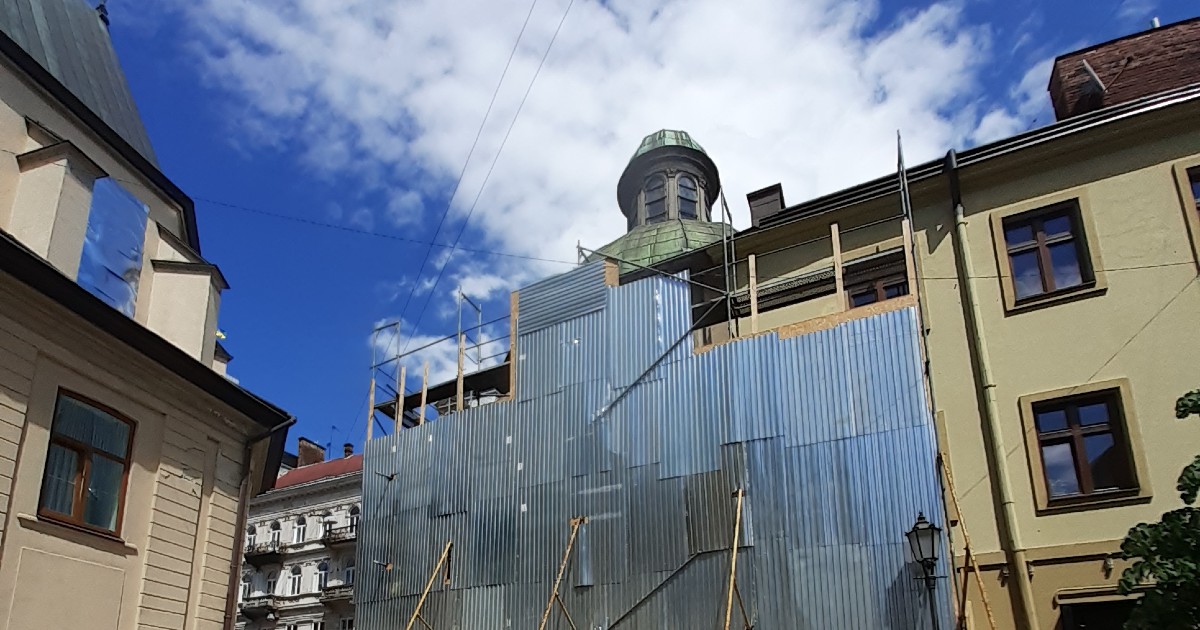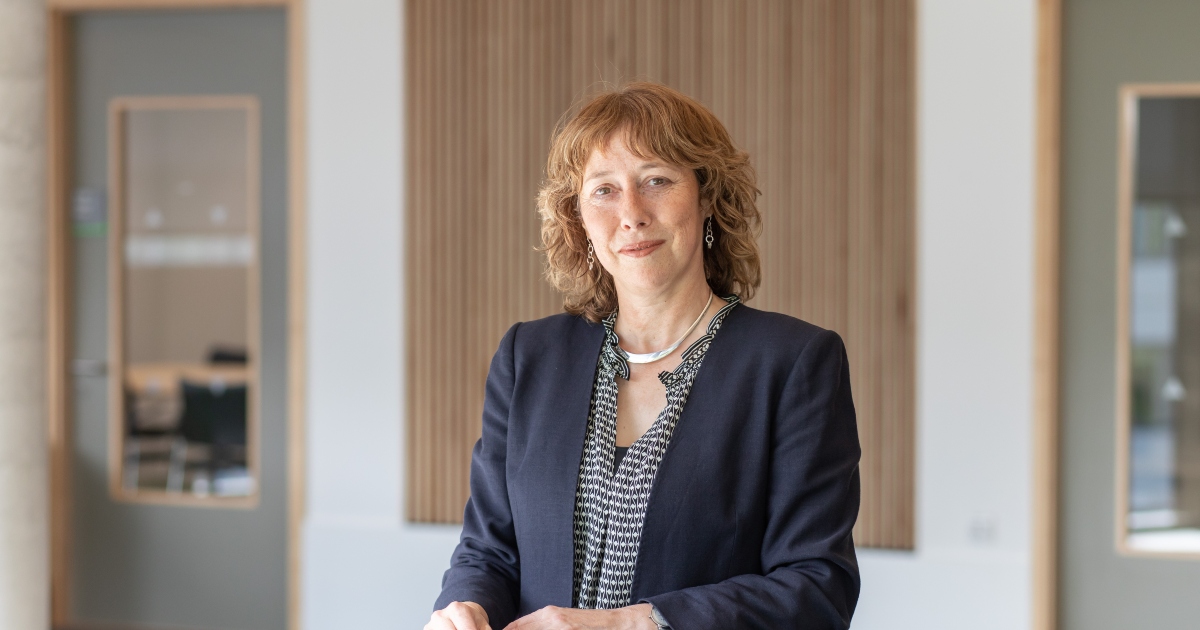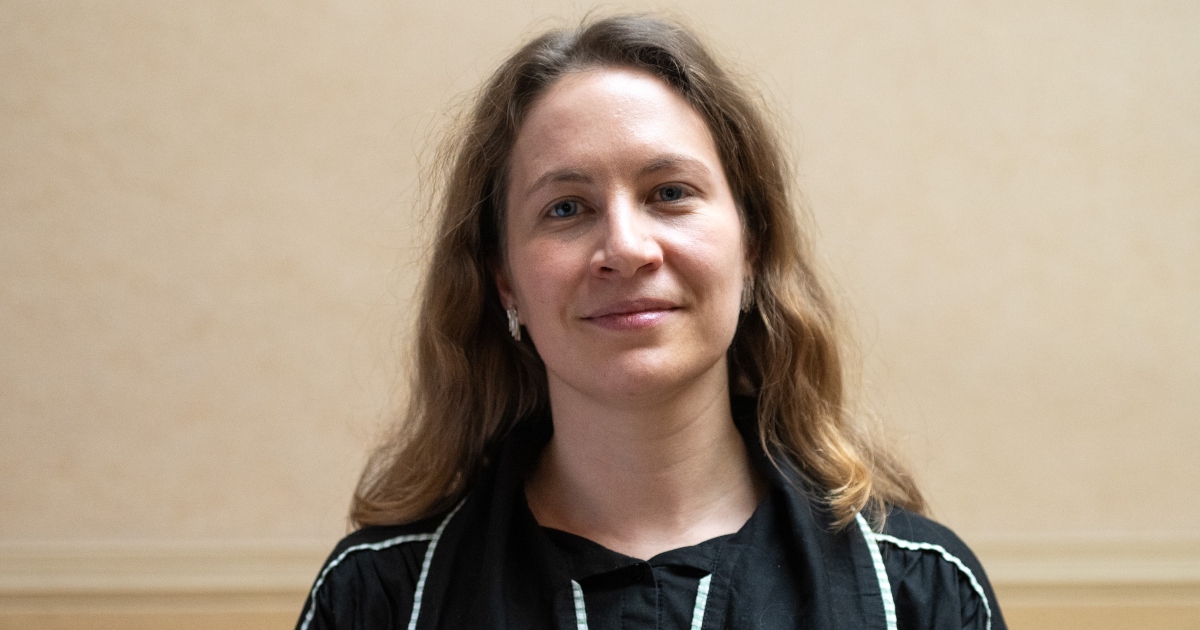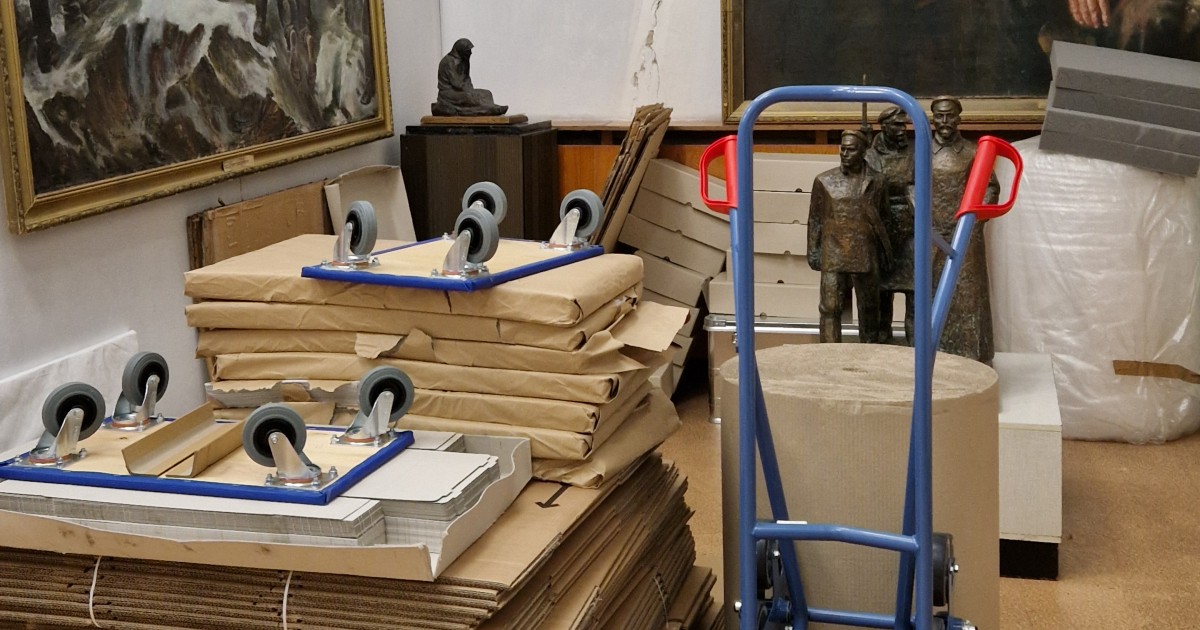Research reveals how Ukrainian cultural heritage is being protected amid Russian invasion
The report also highlights the importance of everyday heritage in Ukraine’s cultural resilience during Russia’s full-scale invasion
/filters:format(webp)/filters:no_upscale()/prod01/cdn/media/stirling/news/news-centre/2025/jun-25/RynokSquare1200X630.jpg)
A new report led by researchers at the University of Stirling has revealed how Ukraine’s cultural heritage is being protected following Russia’s full-scale invasion.
Based on research conducted across nine countries, including Ukraine, the in-depth study traces networks of cultural professionals, civil society, state actors and diverse international organisations across Europe, who acted quickly to mobilise care and resources for at-risk heritage, such as monuments, artefacts and archives, at a time of widespread destruction and displacement.
The report also highlights grassroots innovations in care for heritage during war, and the growing importance of everyday heritage in Ukraine’s cultural resilience during Russia’s full-scale invasion.
However, the authors of the report have said more targeted funding is vital for local organisations to continue their work, particularly in smaller cities and rural areas.
 The Boim Chapel covered by metal sheets for fire protection. Built in 1609, it is in Cathedral Square, Lviv, part of a UNESCO World Heritage Site. (Image by Dr Diána Vonnák)
The Boim Chapel covered by metal sheets for fire protection. Built in 1609, it is in Cathedral Square, Lviv, part of a UNESCO World Heritage Site. (Image by Dr Diána Vonnák)
The report is co-authored by Dr Diána Vonnák and Professor Siân Jones (University of Stirling), with contributions from Dr Josephine Munch Rasmussen and Dr Samuel Hardy (whilst working for the Norwegian Institute for Cultural Heritage Research).
Professor Siân Jones said: “This research has clear implications for policy and practice in Ukraine, the UK, EU countries, and globally. By identifying what works and what doesn’t, the report lays the groundwork for better coordinated, more effective care for cultural heritage in times of conflict.
“The way heritage is managed and recognised internationally directs our attention to sites of national and international significance, but faced with destruction and loss, everyday items such as family photographs, community centres, oral stories, and local traditions can become vital symbols of identity and memory.
“So, we need to find ways to fund and support grassroots community initiatives working to document and look after these evolving forms of everyday heritage. As war reshapes societies, doing this will contribute to social resilience, cohesion, and long-term recovery.”
 Professor Sian Jones
Professor Sian Jones
The findings are based on qualitative research with heritage professionals and organisations carried out between March 2023 and December 2024, including 60 interviews, site visits, media analysis and workshops.
Researchers also analysed how support has been delivered and distributed amidst the challenging conditions of war and offer a comprehensive overview of how humanitarian aid, cultural emergency response, and heritage protection intersect during armed conflict.
Dr Diána Vonnák said: “Many museums and heritage centres became informal hubs for humanitarian activity, both inside Ukraine and neighbouring countries. They provide shelter, distribute aid, host community memorials, and offer psychological support through cultural programming.
“This overlap with humanitarian work underscores the expanding role of heritage in crisis response. Our research shows that in wartime, cultural heritage is about identity, memory, and survival. Heritage gains new significance, becoming part of the infrastructures of care and resilience.
“There is a need for new funding models that bridge the existing divides between cultural heritage protection, humanitarian relief, and civil society support. This would allow organisations working at their intersection to access sustainable support.”
 Dr Diána Vonnák
Dr Diána Vonnák
The research underpinning the report was conducted as part of a European project - Destructive Exploitation and Care of Cultural Objects and Professional/Public Education for Sustainable Heritage Management (DECOPE).
It was funded by a consortium of national funders under the European Joint Programming Initiative on Cultural Heritage and Global Change (JPI CH). The Arts and Humanities Research Council funded the UK component.
The full text of the report (in English and Ukrainian) with findings and recommendations can be accessed here, using the files tab.
 A dismantled exhibition is packaged for protection and storage in a regional history museum in Kharkiv region. (Image by Dr Diána Vonnák)
A dismantled exhibition is packaged for protection and storage in a regional history museum in Kharkiv region. (Image by Dr Diána Vonnák)
Key Findings
1. Rapid Local Response Outpaced Centralised Efforts
In the early months of the war, local civic initiatives, municipal authorities, and various cultural actors on the ground acted quickly and decisively to safeguard cultural assets. Their proximity to affected communities allowed them to step in faster than centralised government structures.
2. Hybrid Organisational Models Were Most Effective
Efforts that combined the expertise and legitimacy of public institutions with the flexibility and responsiveness of NGOs proved particularly successful. These centaur initiatives were best equipped to understand needs across different regions and coordinate efforts among diverse stakeholders, and to combine speed and flexibility of the third sector with the procedural norms and regulatory oversight of public bodies.
3. Foreign Funding Sustained the Heritage Sector
As Ukraine’s economy was redirected toward military and humanitarian priorities, international funding became essential to maintaining cultural work. Well-networked Ukrainian organisations leveraged foreign donations and grants to continue operations and redistribute resources to areas of greatest need. This dependency has been subject to the volatile international political climate, and support has been increasingly difficult to maintain.
4. Local Knowledge Made International Aid Effective
Successful international interventions often relied on Ukrainian partners’ intimate understanding of local heritage networks to deliver support effectively. This local knowledge was crucial in navigating bureaucratic barriers, coordinating logistics, and identifying overlooked or at-risk sites.
5. Overlapping Funding Streams Create Gaps and Opportunities
The research found that funding for humanitarian response, arts and culture, and heritage often exists in parallel silos, making it difficult for initiatives that span these sectors to access sustained support. Heritage professionals working on trauma documentation, oral histories, or cultural programming for displaced people often fell through the cracks of these categorisations.
6. Everyday Heritage Gains New Importance During War
Faced with destruction and loss, communities began valuing everyday items – family photographs, community centres, oral stories, and local traditions – as vital symbols of identity and memory. This everyday heritage became a focus of grassroots documentation and care, particularly in areas experiencing severe conflict.
7. Heritage Institutions Support Wider Humanitarian Efforts
Many museums and heritage centres became informal hubs for humanitarian activity. They provided shelter, distributed aid, hosted community memorials, and offered psychological support through cultural programming. This overlap underscores the expanding role of heritage in crisis response.
8. Emotional Labour and Skills Gaps Among Heritage Professionals
Professionals in the sector are facing increased emotional and psychological pressure, often undertaking memory work and trauma-related documentation without adequate training. Many are engaging in new forms of practice – such as testimonial interviews or curating wartime artefacts – for which additional support is needed.
Policy Recommendations
1. Support Local and Grassroots Heritage Initiatives
Policymakers and funders should ensure targeted funding and technical assistance reaches local organisations, especially in smaller cities and rural areas. These actors are often first responders and hold crucial contextual knowledge.
2. Integrate Heritage into Humanitarian and Cultural Policy Frameworks
Greater cross-sector coordination is needed between humanitarian aid, cultural programming, and heritage protection. This includes creating flexible funding schemes that can support hybrid or interdisciplinary initiatives.
3. Provide Psychological and Skills Support for Heritage Professionals
Introduce training in trauma-informed approaches, testimonial collection, and post-conflict curation. Equally important is emotional support for those carrying the burden of memory work and community care.
4. Recognise and Fund Everyday Heritage Work
Policy should go beyond safeguarding monuments and archives to include funding and recognition for grassroots heritage-making practices. This includes oral histories, wartime artefact collection, and community memory initiatives.
5. Foster Better International-Local Partnerships
International organisations must co-design aid strategies with local professionals to ensure relevance, effectiveness, and mutual respect. This includes investing in relationship-building and shared decision-making mechanisms.
6. Develop Shared Funding Mechanisms Across Sectors
Create new funding models that bridge the existing divides between cultural heritage, humanitarian relief, and civil society support. This would allow organisations working at their intersection to access sustainable support.
About the DECOPE Project
Destructive Exploitation and Care of Cultural Objects and Professional/Public Education for Sustainable Heritage Management was led by the Norwegian Institute for Cultural Heritage Research (NIKU) in partnership with researchers from the University of Stirling (Scotland, UK) and Universidad Rey Juan Carlos (Spain). Associate Partners in the heritage sector include Historic Environment Scotland (Scotland, UK), Riksantikvaren (The Directorate for Cultural Heritage, Norway), and, in Ukraine, the Centre for Urban History of East-Central Europe and the Museum Crisis Centre.
The project received €674,000 in funding under the CHSE call of the European Joint Programming Initiative on Cultural Heritage and Global Change (JPI CH), supported by the UK Arts and Humanities Research Council (AHRC), the Research Council of Norway (RCN), and the Spanish Ministry of Science and Innovation.
The research underpinning this report was led by the University of Stirling with contributions from the Norwegian Institute for Cultural Heritage Research (NIKU).
